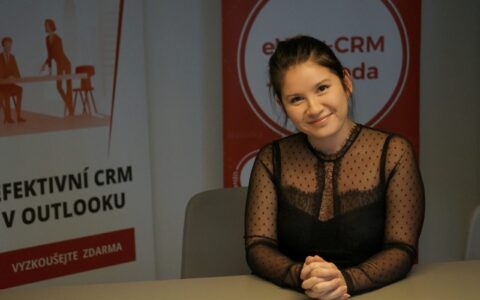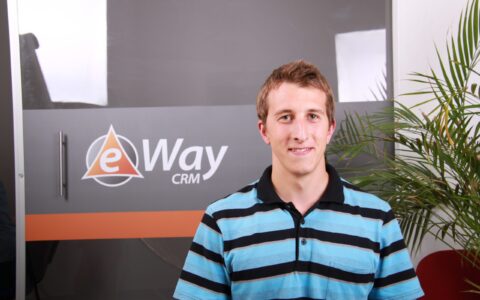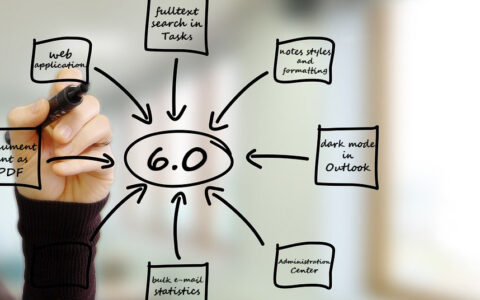Our Developer Jiri: I Know the Feelings of a CRM Customer, Because I Used to Be One

In this article, we interview our developer Jiri. His job is to prepare tailored customizations for customers with special needs. What does this process look like and what helps Jiri with his daily job?

What is your position in eWay-CRM?
I work as an SQL Developer. That means I’m in charge of customizations and SQL triggers for our customers, who need other than standard functions from eWay-CRM.
When does a client decide they need a customization? When does your work begin?
When they find out that the standard behavior of eWay-CRM is not enough for them and they are not able to manage their goals using standard methods. That is when they contact a Sales Rep and agree on a customization. That can happen either before they become our customer, or while already using our product.
Some ask in advance, as they are already used to their systems and they wish to implement their logic into eWay. So, they try to learn from the Sales Rep whether this can be accomplished using eWay. If it turns out that this is not possible using the standard actions and reports, it’s time for a special adjustment. Most of these adjustments are performed while the customer uses eWay-CRM, learns how to work with it, and what can be accomplished with it.
Are you also the one who decides whether the customization will be done or not?
I usually get a complete assignment. However, it can happen that I have an idea of how to do it differently and then the assignment is modified. I am usually given a result to come to. My task is to think about how to accomplish the goal.
There is also our API that helps clients do their own customizations.
Yes, they can do that. However, I wouldn’t say that it’s common. It asks for a lot of time and the client has to learn how to do it.
Are there some common requests that often re-appear? Or do you solve a different problem each time?
I am happy for every brand-new request, however the praxis is different. Our system has been working already for a long time and therefore most of the requests have already been made over the time.
However, that doesn’t mean that I would copy the solution using Copy + Paste! To quote my colleague Stepan, copying is a frequent source of mistakes.
The clients mostly ask for calculations, or automations, that save them lots of clicks. These are usually document changes based on changes done elsewhere. The invoice switches into the status paid and that generates an e-mail, changes a project status, or another action happens. So, it’s mostly calculations and notifications. To sum it up, things that don’t have to be done by a person who would have to remember doing them. From time to time, these are requests for enlarging reports, or for completely new reports.
Another big and interesting group of requests are integrations with other systems, data imports and exports, etc. We are working on an automated e-mailing for a car company at the moment, where the e-mailing is related to the age of a project, meaning the car.
Do we sometimes add a common request to the basic version of our product?
If a request or mistake solution shows that it’s a general matter, then it gets to the new version. That wouldn’t be my job, but the job of my colleagues Stepan and Jan.
These are usually requests tailored to a firm, so they cannot be generalized in the basic version of eWay. This work usually contains custom fields, which differ with every client and their purpose is different, too.
Can you recall your greatest challenge?
It’s a paradox, but the greatest time consumer are minor issues. Recently, there has been quite a difficult report with 22 parameters at a client where we don’t have data access. It was pretty challenging to simulate the mistake and find where it came from. That’s usually the hardest!
How did you get to your job?
Talking about programming itself, I learned how to do it for a similar reason as the customers who want a specific adjustment. I became too comfortable doing something repetitively when I can simply program it!
I came to eWay-CRM from the customer side, so it was a bit of a cultural shock! I used to always be right, as every customer is! And now, I am always right as the developer (laughing).
So, you used to be an eWay-CRM customer?
No, but I worked as an administrator of an informational system we used at my previous job. I was in charge of its support and management, reporting, etc. That means I talked to the suppliers from the position of a customer. But now it’s me who’s the supplier. And several times, I had to say: “I’m sorry!” in my head, thinking of the previous suppliers!
On the other hand, this experience gives me a good image and ability to feel the customer. I lived through it and I can imagine what the customer probably wishes to accomplish.
And that helps me to think further. People often look for a solution for their current problem only. But it can be done more effectively, as they later build on this solution. While looking for a solution, it can happen that after a discussion, we modify and broaden the whole project so that we really accomplish a final solution.










